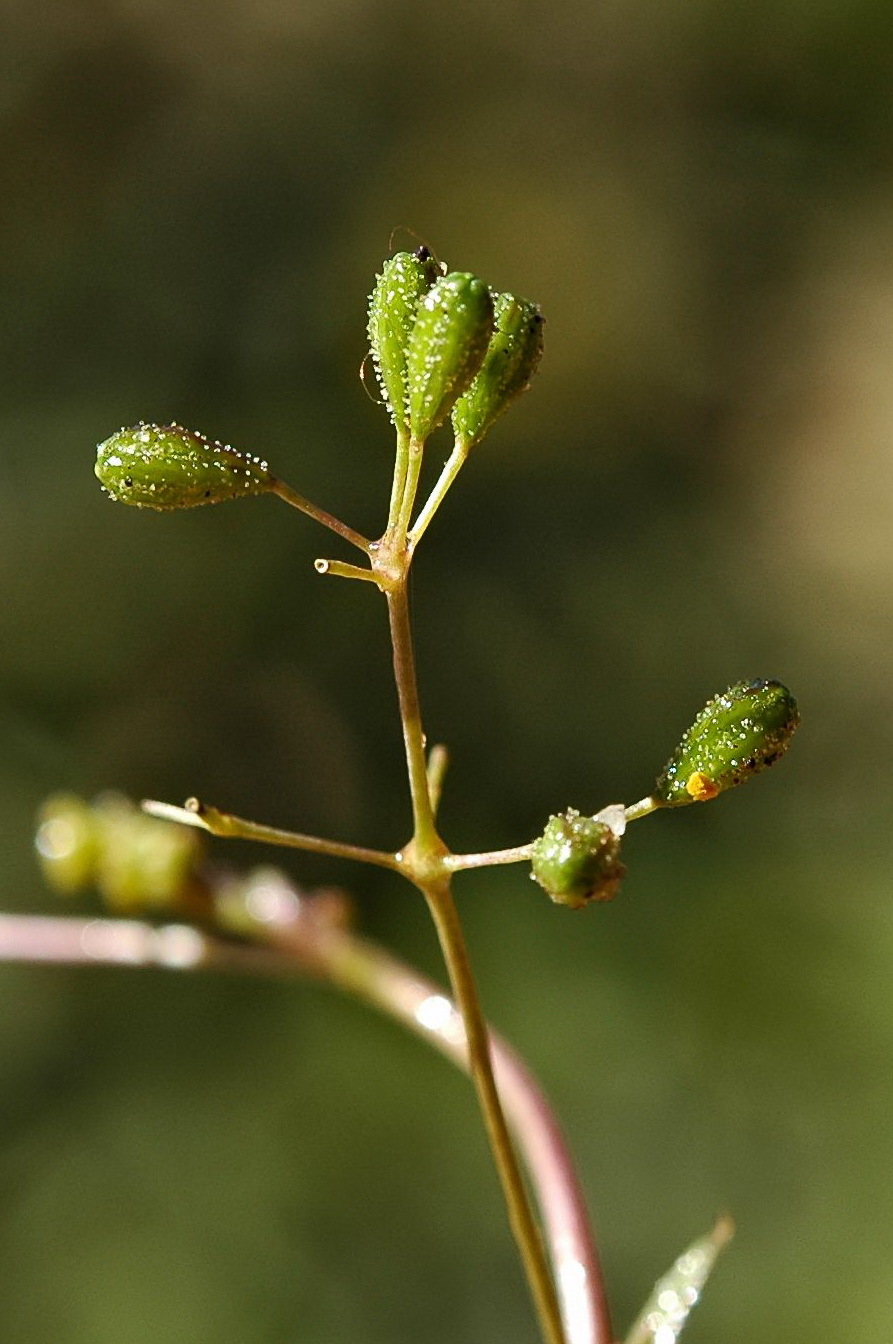Boerhavia dominii
Meikle & Hewson Tah-vinePerennial prostrate herb with a thick fleshy taproot; stems to c. 50 cm long, glabrous or with sparse papillose hairs. Leaves ovate, lanceolate or elliptic, 15–40 mm long, 3–20 mm wide, sparsely papillate on upper surface, lower surface often red-dotted (at least when dry) with viscid exudate; margins often slightly undulate. Inflorescence axillary or terminal, simple or branched; peduncles 1–6 cm long; flowers subsessile, in umbels of 2–6; petaloid part of perianth c. 2 mm long, 3 mm wide, pale pink to mauve, obscurely 5-lobed; stamens 2–4, 1–2 mm long; style shorter than to subequal to stamens. Fruit (anthocarp) obovoid or clavoid, 5-ribbed, 2–4 mm long, covered with short, viscid-glandular hairs. Flowers Dec.–Apr.
MuM, Wim, VVP, VRiv, MSB, RobP, MuF, GipP, CVU, NIS, EGU. All mainland states. Locally common on clay and alluvial soils within the Murray River flood zone downstream from c. Yarrawonga, with isolated records from Donald and Suggan Buggan. Occasionally weedy and collected once (1984) from a creekbank in suburban Essendon.
Walsh, N.G. (1996). Nyctaginaceae. In: Walsh, N.G.; Entwisle, T.J., Flora of Victoria Vol. 3, Dicotyledons Winteraceae to Myrtaceae, pp. 102–104. Inkata Press, Melbourne.
 Spinning
Spinning



